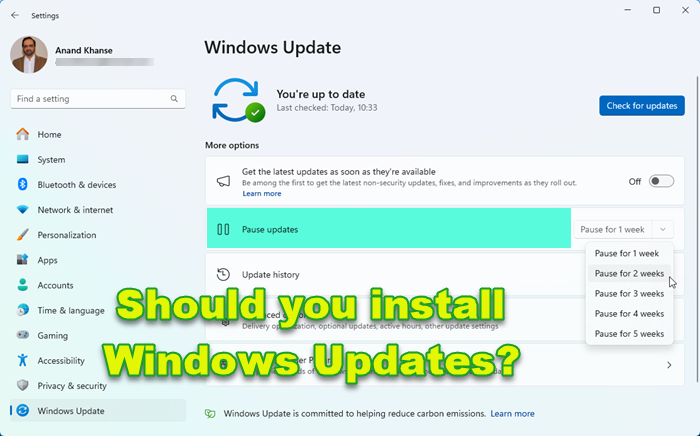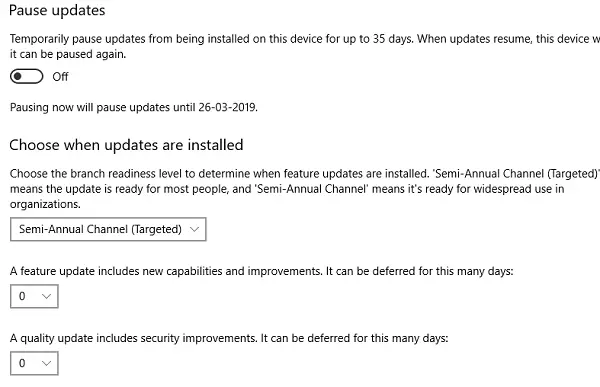Microsoft rolls out Windows Updates regularly. It can be security updates, a significant upgrade, or cumulative updates. Given the problems that Windows Updates cause, some people have this lingering question: Should you install Windows Updates? Well, nobody can be blamed. Microsoft has failed terribly on many of the Windows Updates that have been rolled out in the recent past.

Should you install Windows Updates?
To all those who have asked us questions like – Are Windows Updates safe or essential? The short answer is YES; they are crucial and mostly safe. These updates fix bugs and bring new features, ensuring your computer is secure. Every feature update and regular cumulative updates roll out security, which should not be ignored.
However, considering your past few experiences, one can choose to do things differently.
Pause, Defer or Delay Windows Updates
Windows 11 and Windows 10 offer an inbuilt feature to delay the updates. Go to Settings > Updated and Security > Update > Advanced Options. Here, you have three options:
- Pause Windows Updates for thirty-five days. It can stop all kinds of updates and can be enabled again once you install them.
- Delay or Defer Updates
- You can delay feature updates for up to 365 days on Windows Pro, Windows Enterprise, and Windows Education.
- You can even also delay quality updates for up to 30 days which contain security improvements.
Look for Feedback on Forums for the latest updates
Once you have set that, you are safe if the update could make the system unstable. It is best to check for issues that get posted in forums. Microsoft forums are filled with issues for any feature update, which gives you a very good idea about the stability of new updates. Here are a few types of reports you should focus on:
- Driver compatibility – Find out which Drivers you have on your computer.
- Unsupported devices – Sometimes Microsoft blocks updates for some devices.
Never manually check for Updates
In a surprising report, Microsoft seems to roll out beta updates for Windows Users if they use the get Update button, i.e., by checking for Updates manually.
If you have often faced issues after installing updates, you might want to consider installing them after a week or two. Microsoft usually fixes major bugs within a month or so. So watch forums and Microsoft blogs for such updates, and then install it.

Leave a Reply